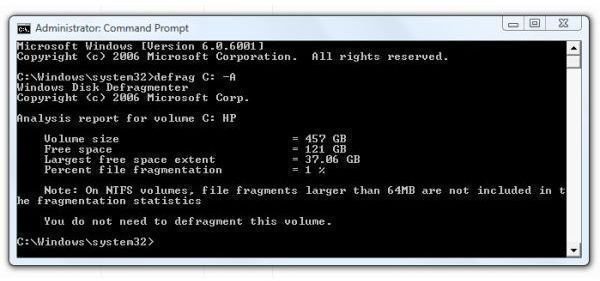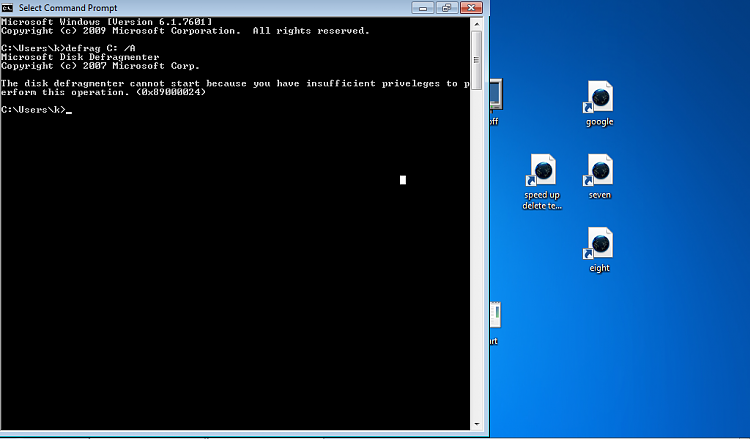-
Defrag Vista Cmd Prompt
Exert control and defrag from the command line in Windows 7. Of all the maintenance tasks one must do to keep a personal computer running properly, none is as basic as defragmentation. The constant saving and deleting of files can cause major inefficiencies in the way your storage hardware performs. Running the Windows 7 defragmentation utility can restore some of that lost efficiency, but if you use the command line you can expand your options and enhance your control over the process.

Exert control and defrag from the command line in Windows 7. Of all the maintenance tasks one must do to keep a personal computer running properly, none is as basic as defragmentation. The constant saving and deleting of files can cause major inefficiencies in the way your storage hardware performs. Running the Windows 7 defragmentation utility can restore some of that lost efficiency, but if you use the command line you can expand your options and enhance your control over the process.
Note: I saw this tip on Tech. Net but I wanted to expand on it a little bit. As they mention, the syntax for the Windows 7 version of the command line version of defrag. Vista. Syntax. The defrag. Click the Start button and type cmd in the Search box.

Navigate to the cmd. Run as administrator entry as shown in Figure A.
Figure ARun an elevated command line prompt. After answering the UAC, you will get the familiar command prompt window, similar to Figure B. This option will tell you whether you actually need to defrag a particular drive./XPerform free- space consolidation on a particular volume. This option will report whether a defrag operation is currently taking place on a particular volume./HRun the operation at normal priority instead of the default low priority. Specify this option if a computer is not otherwise in use. This option should increase the speed at which a defrag operation is performed./MDefragment multiple volumes simultaneously, in parallel.
You will need to have SATA or SCSI drives for this to be useful./UPrint the progress of the operation on the screen. This is a good option to have on so you can track your commands - without it you may find yourself wondering if anything is happening./VVerbose mode. Provides additional detail and statistics, which will help your decision making, especially when coupled with the analysis option listed above.< volume> The drive letter or mount point of the volume to defragment. Bottom line. The various defrag options give you a significant amount of control with regard to this common utility.


Probably the most common command with this technique would be: Defrag C: /H /U /V. That would give the defrag operation for drive C: higher priority, show you the progress, and provide the most description during each step. Kaelin has been writing and editing stories about the IT industry, gadgets, finance, accounting, and tech- life for more than 2. Most recently, he has been a regular contributor to Breaking.
Modern. com, a. New. Domain. net, and Tech.
To see how much space you have used and free. Start - All Programs - Accessories - Right click Command Prompt and choose Run As Administrator. Type (or copy and.
- Windows 7: Open Elevated Command Prompt with Administrator Privileges.
- Links to Other Important Information. Support for Windows XP and Windows Vista without latest service packs ends in 2010. How to Fix 500 Internal Server Error in PHP.
Applies To: Windows Server 2003, Windows Vista, Windows XP, Windows Server 2008, Windows 7, Windows Server 2003 R2, Windows. Steps on how to run Microsoft Windows Defrag and organize the data on your computer to make it run faster. Using the options available from the command line version of the Windows 7 defragmentation utility you have much more control over the maintenance of your storage.
/about/windows-7-cmd-commands-5814df755f9b581c0baede29.png)


-
Commentaires
